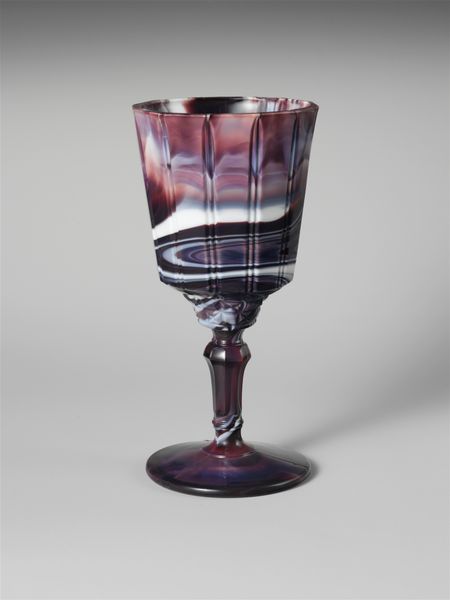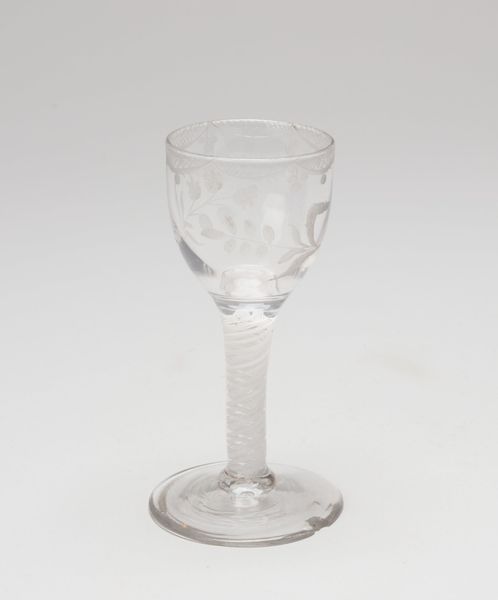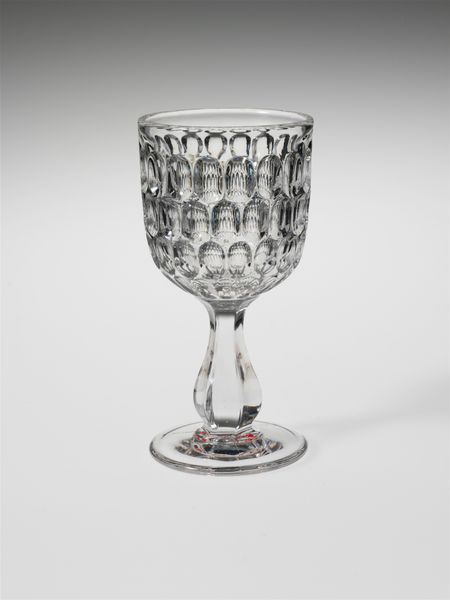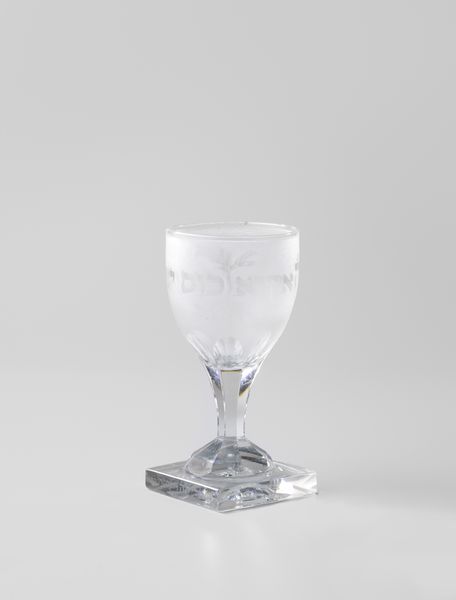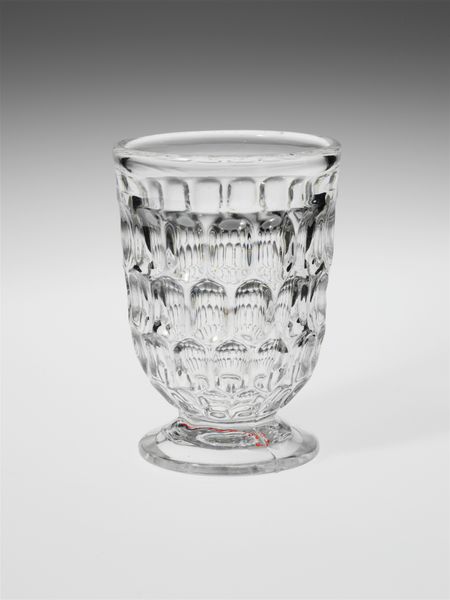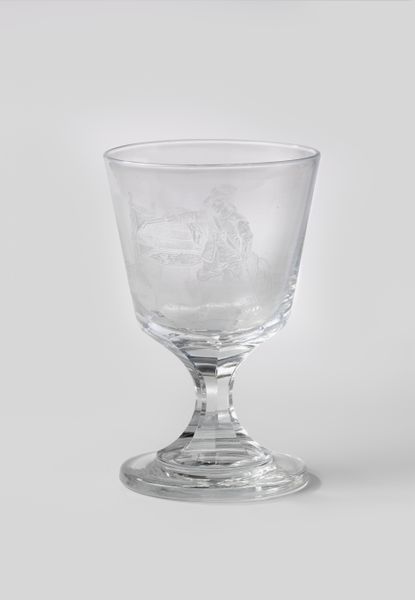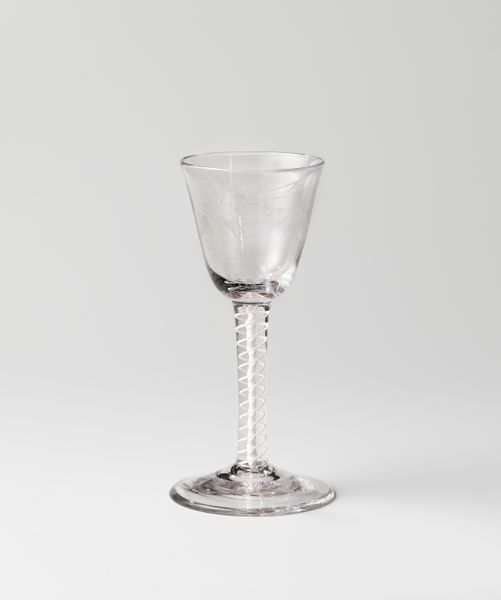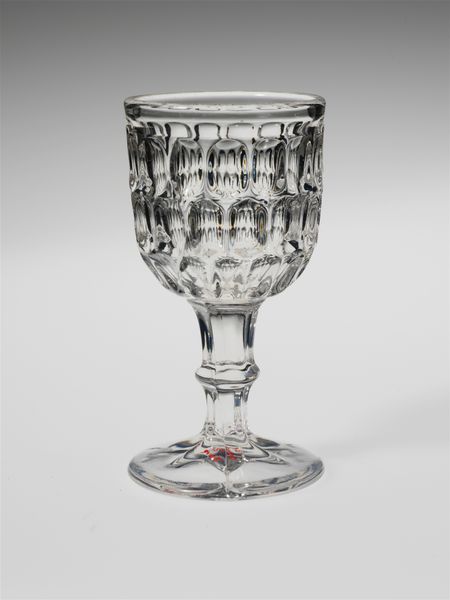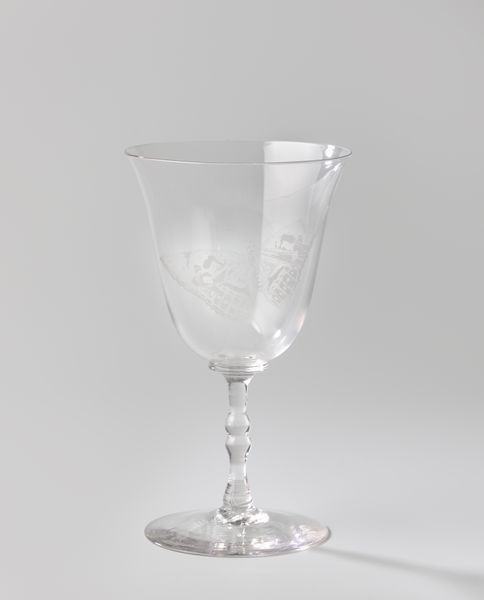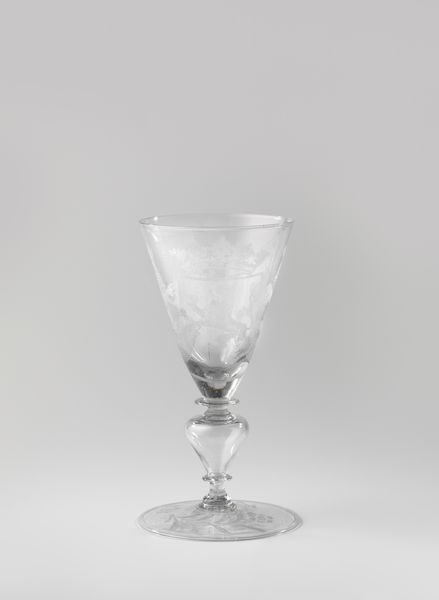
ceramic, glass
#
art-deco
#
ceramic
#
figuration
#
glass
#
stoneware
#
geometric
#
ceramic
#
product photography
#
decorative-art
Dimensions: height 13.5 cm, diameter 7.2 cm
Copyright: Rijks Museum: Open Domain
Curator: This intriguing object is called "Bokaal met geslepen vierkanten," or "Beaker with cut squares," made sometime between 1920 and 1940, crafted by the Gebrüder Lorenz. It's primarily made of glass, demonstrating impressive decorative artistry. What are your initial thoughts on this piece? Editor: There's an immediate formality and yet…intimacy to it. The dark red glass and sharp geometric cuts give a sense of rigid structure, but the delicate engraved images within the squares soften it, giving me an unexpectedly domestic feel. It whispers of early 20th century bourgeois life. Curator: Precisely! Consider the rise of decorative arts during this period. Post-World War I, there was a yearning for beauty, and items like these elevated everyday life. This bokaal wasn't just functional; it was a statement piece meant to signify a certain social status. Editor: I wonder about the gendered aspects, though. The vessel and the domestic scenes point toward feminine ideals of home and hearth. But does the rigid geometry then also play to the masculinity inherent to industry? Is it both an assertion and an undermining of binary norms? Curator: That’s insightful. The juxtaposition could be intentional. The art deco movement sought to reconcile mass production with handcrafted beauty, revealing both traditional craftsmanship and new technologies. The question becomes, was it available to everyone, or was it used to underscore societal divisions? Editor: That's always the tension, isn't it? Objects like these, born of both artistry and industry, became commodities representing a very specific slice of society. And museums become vessels, too, enshrining not just artistic talent, but the sociopolitical contexts that defined their moment. Curator: Precisely. Examining these intersections – gender, class, industry, artistry – reveals the nuanced layers of history embedded within even a simple glass beaker. Editor: Right. And that history asks us, then what does such an object represent *now*, placed on display nearly a century later, viewed through the fractured lens of our present? It truly complicates its assumed simplicity.
Comments
No comments
Be the first to comment and join the conversation on the ultimate creative platform.
